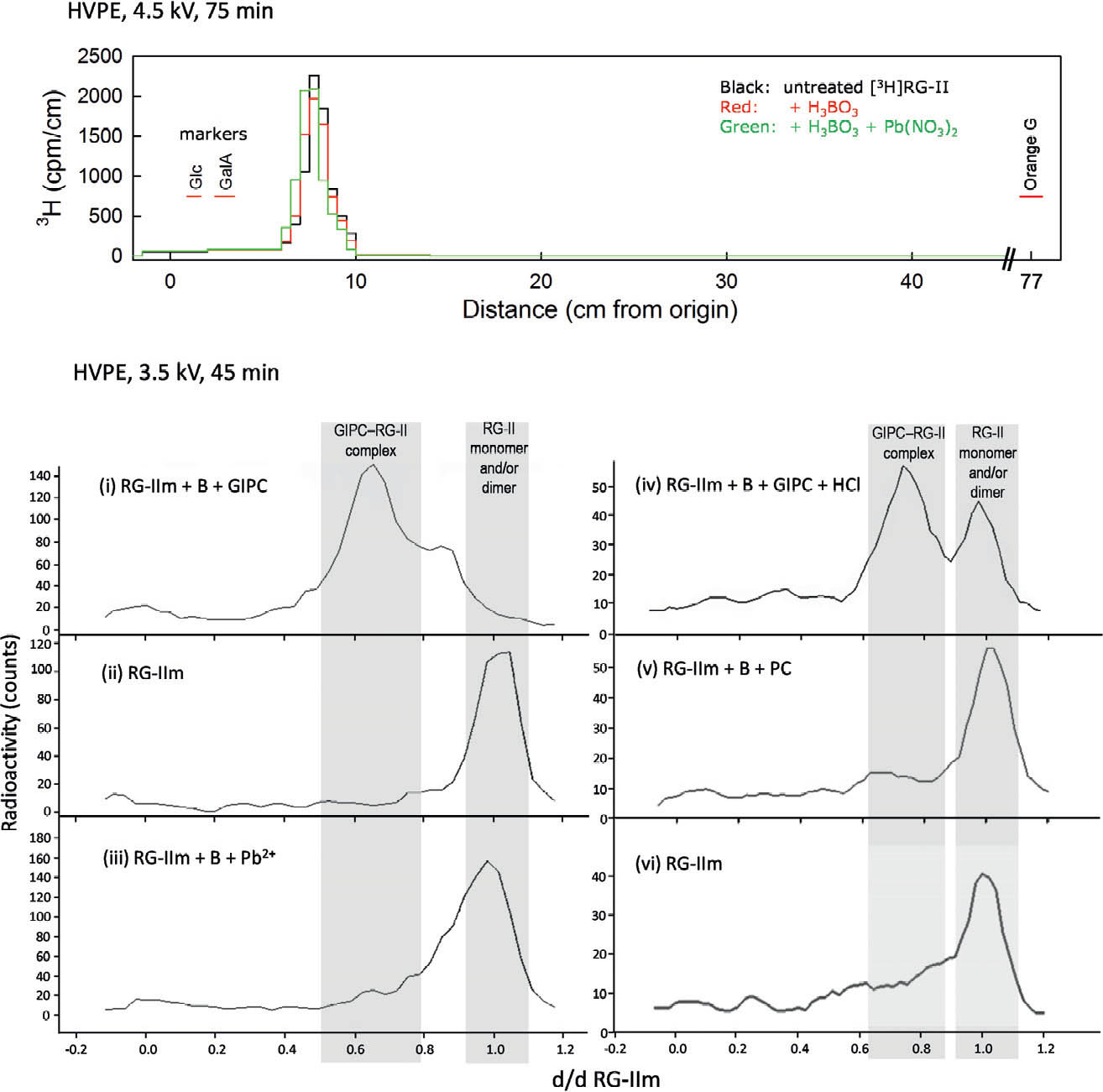
High-voltage paper electrophoresis of radiolabelled RG-II and the effect of boric acid, Pb2+ and glycosylinositol phosphorylceramides (GIPCs).
(a) [3H]RG-II was loaded on to the paper after 9 h of pre-treatment of monomeric [3H]RG-II in 250 mM pyridine buffer, pH 4.7, with or without 1 mM H3BO3 or 1 mM H3BO3 plus 0.5 mM Pb(NO3)2. After electrophoresis, the paper was cut into strips, which were assayed for tritium by scintillation-counting. The positions of non-radioactive markers (glucose, galacturonic acid and Orange G) are also shown. (b) Samples were loaded on the paper after 4 h of pre-treatment of monomeric [3H]RG-II (RGIIm) in 50 mM ammonium acetate, pH 4.8, with or without various combinations of 1.2 mM boric acid (B), 0.5 mM Pb(NO3)2 (Pb2+), GIPCs, commercial phytoceramide (PC), and 0.1 M hydrochloric acid (HCl). After electrophoresis, papers were read on a LabLogic AR2000 radio-TLC Imaging Scanner. The distance migrated (d) is given relative to dRGIIm (the distance migrated by monomeric RG-II, that is to say approximately 6 cm). Grey bands indicate the positions of monomeric RG-II (right) and the GIPC–RG-II complex (left).
(Fig. from: Voxeur A, Fry SC. Glycosylinositol phosphorylceramides (GIPCs) from Rosa cell cultures are boron-bridged in the plasma membrane and form complexes with rhamnogalacturonan II. Plant Journal 79: 139–149, 2014)